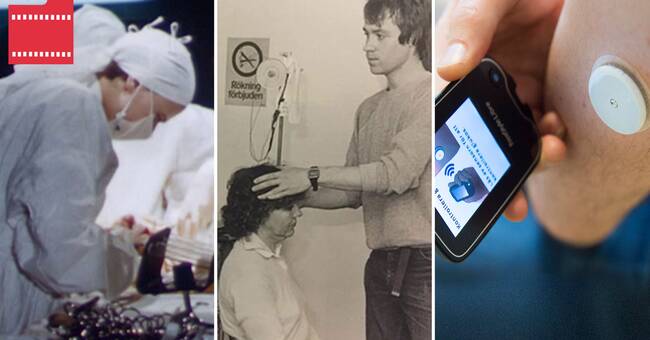Pacemaker
In 1958, a pacemaker was inserted into a human for the first time.
The implantable pacemaker was a Swedish invention and it was also a Swedish patient who underwent the operation.
However, the first pacemaker lasted only a few hours and the patient Arne Larsson, who suffered from severe heart rhythm disorder, had time to have a total of 26 different pacemakers operated on before he died - for reasons other than heart problems - in 2001, 86 years old.
A modern pacemaker has a battery life of five to ten years and the operation usually takes around 45 minutes.
In Sweden alone, there are around 50,000 pacemaker carriers.
In the clip, you can hear Rune Elmqvist, the creator of the implantable pacemaker, and the patient Arne Larsson tell.
Hearing implants
The first bone-anchored hearing aid was operated on a Swedish patient in Gothenburg in 1977. The model, called Baha (Bone anchored hearing aid), is attached with a titanium screw in the skull behind the ear and converts sound into vibrations sent via the bone to the inner ear.
The technology was developed thanks to a collaboration between Chalmers and Sahlgrenska University Hospital.
In parallel, researchers in other parts of the world worked with their own hearing implants, and today there are several variants that are suitable for different hearing injuries.
In the clip, you can hear the patient Mona Andersson talk about her experience of being world first with the new technology.
Continuous glucose measurement (CGM)
Continuous glucose monitoring (CGM) is the blood glucose meter, or sensors that sit like a button on the arm of people with diabetes, a bit like an implant.
With the sensor, you can then read the blood sugar with a reader or now also apps in the mobile.
The first CGM was approved in the United States in 1999, but it was only worn for three days and then the data was analyzed by doctors.
In 2004, the first system similar to today's blood glucose meters was released.
And it took until 2014-2016 before they began to be used on a broad front in Sweden.
In the clip, you can hear the diabetic Gunilla Sigvardsson from Vimmerby talk about what it was like to go from daily needle sticks to the new sensor.

